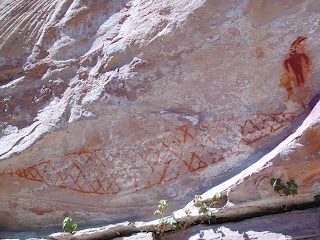This is another of my favorite trails in Rocky Mountain National Park and another I have yet to complete. I've hiked this trail on three occasions but I've only completed the Granite Falls loop, over 10 miles round trip. The other trips were only as far as Big Meadows in search of the outstanding brook trout population.
As with most trail heads in RMNP this one is also over 8,000 feet; at almost 8,800 feet. Also, with these hikes at altitude make sure you hydrate very well to avoid altitude sickness. The trail head is located just inside the Kawuneeche entrance on the west side of RMNP.
The first 1.8 miles to Big Meadows in modestly steep. My younger brother has done this with me twice and Roaring River twice and his opinion is this hike is much worse. I disagree, my opinion is the first half-mile of the Lawn Lake trail is much worse. Regardless of opinion, it's about 600 feet of elevation gain in under two miles.
You never know what type of animals you're going to see during the climb to Big Meadows. I've seen both elk and moose in this area and the constant chatter of the squirrels are sometimes annoying. I ran into this cow and calf moose during an August 2008 hike.
The Big Meadows are a mile-long high meadow, with Tonahutu Creek meandering through it. These photos were taken during my first hike on Green Mountain trail in September, 2006.
As with most trail heads in RMNP this one is also over 8,000 feet; at almost 8,800 feet. Also, with these hikes at altitude make sure you hydrate very well to avoid altitude sickness. The trail head is located just inside the Kawuneeche entrance on the west side of RMNP.
The first 1.8 miles to Big Meadows in modestly steep. My younger brother has done this with me twice and Roaring River twice and his opinion is this hike is much worse. I disagree, my opinion is the first half-mile of the Lawn Lake trail is much worse. Regardless of opinion, it's about 600 feet of elevation gain in under two miles.
You never know what type of animals you're going to see during the climb to Big Meadows. I've seen both elk and moose in this area and the constant chatter of the squirrels are sometimes annoying. I ran into this cow and calf moose during an August 2008 hike.
The Big Meadows are a mile-long high meadow, with Tonahutu Creek meandering through it. These photos were taken during my first hike on Green Mountain trail in September, 2006.
Since then the bark beetles have decimated the canopy and well over 50% of the trees on the west side of the park are dead. Nature will recover as it always does, but I would watch for falling timber if the winds pick up.
Once you reach first sight of the meadows, the trail will circle the meadow as you travel the next 3.3 miles on the way to Granite Falls. The trail also levels out at this point as you gain just over 400 feet in elevation over that distance.
As you pass the upper end of Big Meadows, you pick up Tonahutu Creek which you will follow the remainder of the trek to Granite Falls.
This section of the trail is relatively flat but uneven in places. On a solo hike I went down about 3 miles in when I stepped on a root and twisted an ankle. I have bad ankles from many miles of running and many sprains playing basketball when I was younger. My ankle locked out, so (from my back) I popped it back in place and kept on trucking.
The next landmark on the trail is Granite Falls. I'm not sure of the height of Granite Falls but these cascades are impressive.
From Granite Falls it's another 2+ miles to Haynach Lakes or 5 miles back to the trail head. I plan to make the remaining journey to Haynach later this year when I visit again in August.
Granite Falls is a great day hike but prepare for the altitude and once you've beat that first 2 miles, you've got it made. If you go, pack a rod, Tonahutu Creek is absolutely polluted with brook trout!
Chris











